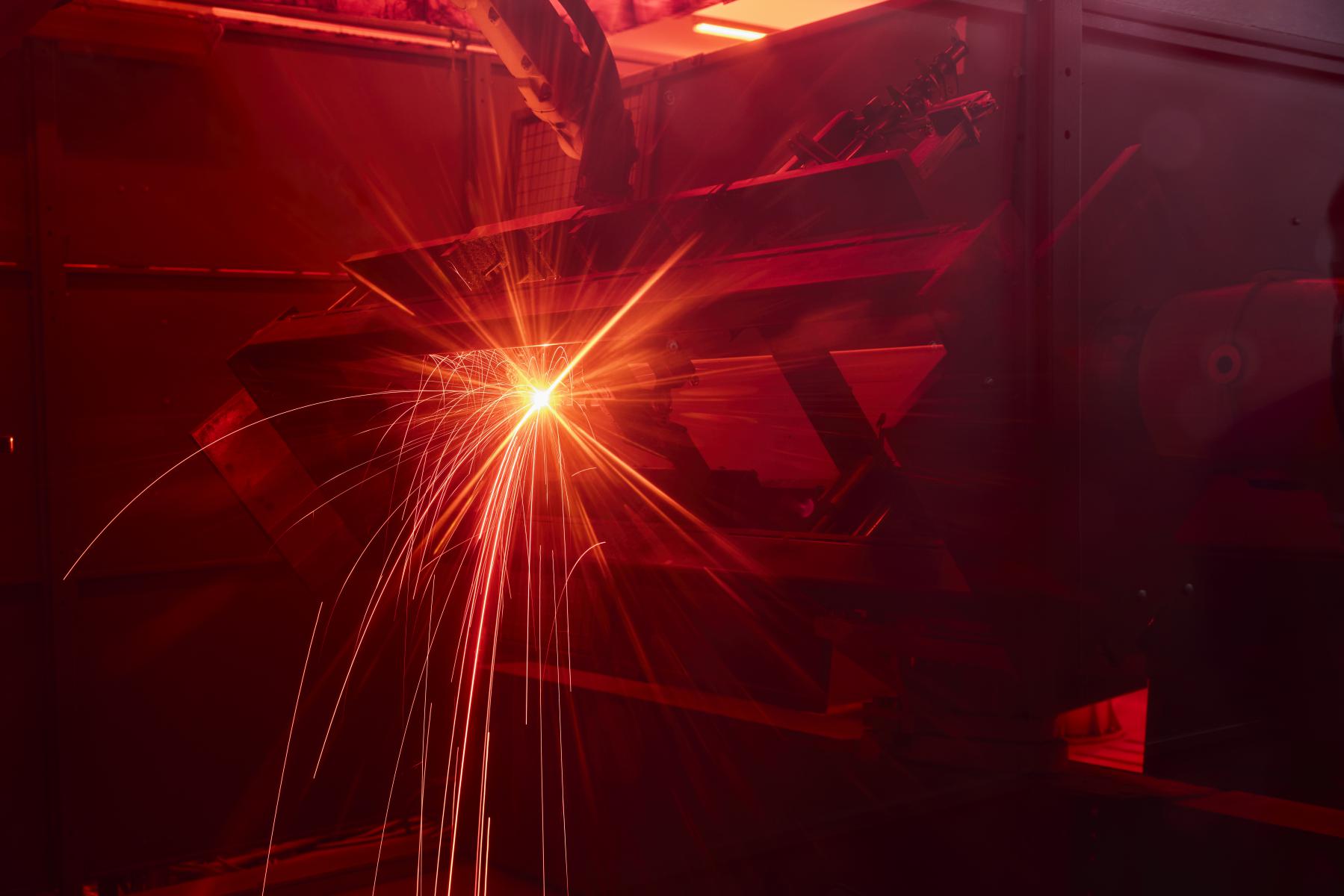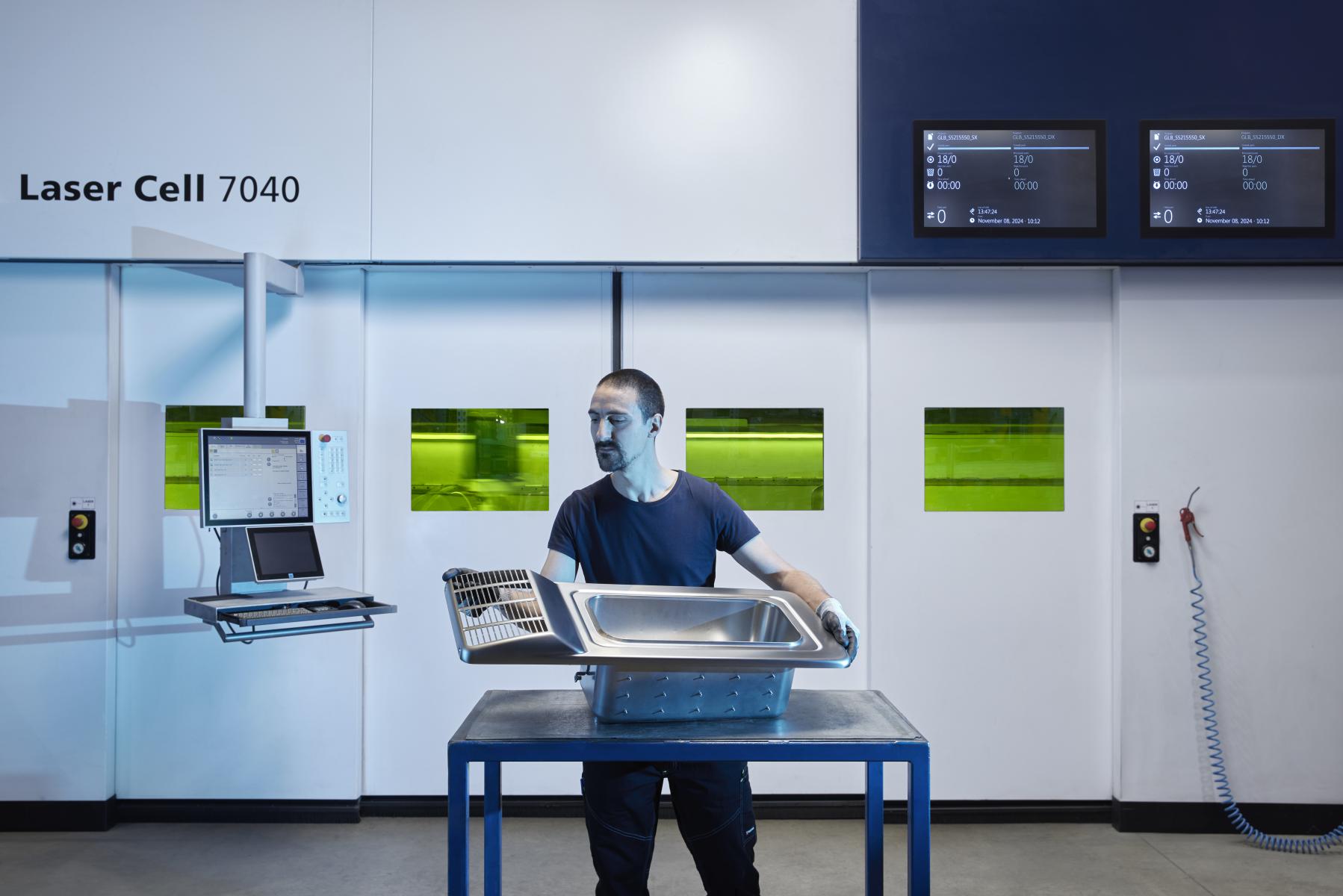Fil d'Ariane
Stainless steel processing: precision and high quality standards for your industrial project
In this article, we explore the main stages and technologies involved in stainless steel processing, illustrating the advantages of relying on a qualified partner like Minifaber.

Minifaber is a specialist in professional metal processing, with a particular focus on stainless steel. Stainless steel - thanks to its unique properties - is a fundamental and irreplaceable material in a wide range of industrial and commercial sectors.
This guide will be helpful in exploring the main steps in the processing of stainless steel, with a particular focus on the technologies used to process this metal and the importance of relying on a qualified partner such as Minifaber.
Characteristics of stainless steel
Stainless steel is an alloy composed mainly of iron, carbon, and chromium, and for certain alloys also nickel and molybdenum, which give the material excellent corrosion resistance.
This property makes stainless steel ideal for harsh environments exposed to moisture, chemicals, and atmospheric agents, as well as for the contact with food, maintaining both functionality and aesthetics over time.
Beyond its resistance, stainless steel is extremely durable and guarantees excellent hygiene. This is why it is widely used in the food, medical, and pharmaceutical industries, where safety and cleanliness are essential requirements. Furthermore, stainless steel is also both recyclable and sustainable, an increasingly important value for environmentally conscious companies.
Technologies for stainless steel processing: a technical focus
Steel processing requires both precision machineries and specific skills, considering that its stainless properties must not be altered and due to its particular mechanical and metallurgical characteristics.
To ensure the highest quality processing of stainless steel, Minifaber uses the latest technologies combined with highly specialized processes.
Take a closer look at the main techniques used, which combine precision, efficiency, and reliability for flawless results.
Laser cutting for stainless steel
Stainless steel laser cutting is part of Minfaber’s metal laser cutting service and it is based on the use of a high-power laser beam, which concentrates energy on a small area of the material, to produce a localized melting and vaporization of the metal. It allows extremely precise cuts with clean edges, free from mechanical deformation.
Minifaber uses fiber and CO2 laser systems with variable power depending on the thickness of the material, typically from 2W to 4kW, which guarantee a clean cut up to thicknesses of 4-5 mm.
The high energy concentration allows for high feed rates without compromising the quality of the cut, also reducing the need for additional finishing work.
The use of assist gas - as nitrogen - during cutting promotes the expulsion of molten material and thermal control of the cutting zone, minimizing the heat-affected zone (HAZ).
Punching for stainless steel
Punching on stainless steel uses high-performance machineries equipped with interchangeable tools to create holes or shapes, in a very quick and accurate way. Minifaber uses CNC punching systems with numerical control that allow complex drilling and shaping sequences to be programmed with reduced tolerances.
The process is particularly suitable for thicknesses up to 6-8 mm and allows to obtain regular shapes without deforming the sheet metal.
Minifaber is equipped with machines that combine both laser and punching technology, to optimize the various processes in terms of quality and speed of execution.
Stainless steel processing: bending and deep drawing
CNC bending on stainless steel is performed using bending presses equipped with specific tools and devices that are designed to create the requested shapes. Digital programming of the bending cycle allows for the replication of precise and repeatable angles, which are essential for components that require tighter tolerances.
On the other hand, deep drawing is a cold plastic deformation process in which the sheet metal is “slid” into a mold to create hollow 3D shapes, such as pots, sinks, containers, or other 3D shaped elements.
The challenge with stainless steel is to maintain the anti-corrosive characteristics of the material, which is why the entire manufacturing process is carefully monitored to prevent any form of contamination.
Stainless steel: TIG, MIG, and laser welding
TIG (Tungsten Inert Gas) and MIG/MAG (Metal Inert Gas and Metal Active Gas) welding are electric arc welding processes used to join parts made of stainless steel.
TIG welding uses a non-consumable tungsten electrode and an inert gas (argon) to protect the welding area from oxidation and transmit the electric arc from the electrode to the workpiece by ionizing the gas itself. It is particularly suitable for high-precision joints and thin thicknesses, as it allows precise control of heat and penetration, limiting deformation of the welded material and maintaining high mechanical properties.
MIG/MAG welding uses a consumable metal wire and an inert or active gas for protection.MIG/MAG welding is faster than TIG welding and more suitable for greater thicknesses, but requires particular attention to parameter control, in order to avoid defects such as porosity, cracks, and poor penetration
For stainless steel laser welding is the ideal process, due to its good penetration characteristics without deforming the sheet metal and altering its stainless properties.
Minifaber also integrates robotic welding systems, which guarantee uniformity and repeatability, particularly useful in mass production. Automation allows the welding speed, the amount of material deposited, and the protection of the molten pool to be kept constant.
Stainless steel surface treatments: polishing and passivation
Mechanical polishing improves the surface finish of stainless steel, reducing roughness and giving it a shiny, uniform appearance. Excellent polishing is essential for improving the corrosion resistance of the manufactured product.
Passivation is a chemical treatment that follows pickling and general cleaning of the product. It promotes and increases the natural formation of a protective layer of chromium oxide on the surface, further increasing corrosion resistance. This process involves immersing the piece in acid solutions (usually citric or nitric acid), followed by rinsing and drying. Passivation can also be done without immersion, by means of localized electrochemical pickling, which is particularly used to remove welding oxides.
Advantages of stainless steel processing with Minifaber
Minifaber’ stainless steel processing stands out for its high technical level and the adoption of advanced production processes, which guarantee results of the highest precision and durability. Thanks to the use of latest-generation CNC machinery, high-power laser cutting systems, and specialized welding techniques such as TIG, MIG, and laser, each stage of the production cycle is optimized to maintain the mechanical and chemical properties of stainless steel.
The Minifaber’ technical team is constantly updated on innovations in the sector and takes care of every detail, from design to finishing, ensuring full compliance with current regulations and international quality standards. Robotic welding and quality control systems, including non-destructive testing, allow for strong and uniform joints, which are essential for applications where reliability and safety are paramount.
Minifaber offers customized solutions that can be adapted to any production requirement, from small batches to large-scale industrial production, always ensuring maximum efficiency, waste reduction, and time optimization.
The combination of technological innovation and specialist expertise makes Minifaber an ideal partner for all stainless steel processing, from the food and medical sectors to the automotive and construction industries.
Contact us for a personalized technical consultation or to request a quote and discover all our solutions dedicated to metalworking.
Minifaber is your partner for sheet metal processing.

